Google AI Mode or ChatGPT Web Search is where you should search the web?
Choosing the best AI chatbot comes down to speed, accuracy, and convenience. Both Google AI Mode and ChatGPT promise top performance, but how do they actually compare when tested with multiple prompts in the real world?
Where does Google AI Mode shine?
Google is improving AI Overviews with Google AI Mode and it doesn't skimp when it comes to speed and authority. It works with a focus on providing direct, source-based, accurate responses with accurate, transparent, and up-to-date information.
Basic practical questions


If you're looking for objective, fact-based information, Google AI Mode has a clear advantage. It pulls current data, directly cited from the web, and displays sources right next to answers. That setup gives it instant credibility. For example, if you're looking for tax rates or public health statistics, direct links to government or organization websites make it easy to verify information right away.
ChatGPT, on the other hand, uses a 'Search the web' feature that you can enable, but only if you're logged into your account. Without that feature, responses will come from its training data, which may not include the latest updates. Even with this feature enabled, the layout isn't very clean. Sources tend to show up at the top or bottom of responses, making them disruptive or hard to find.
Current news and events
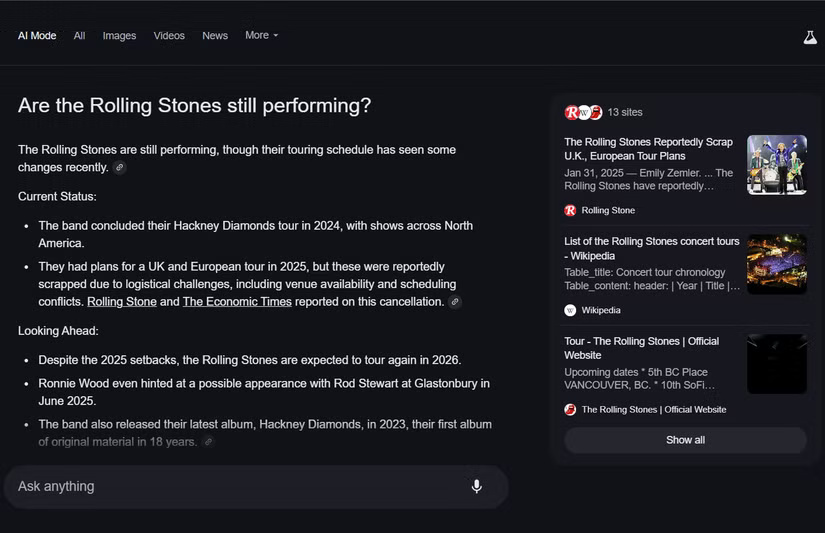
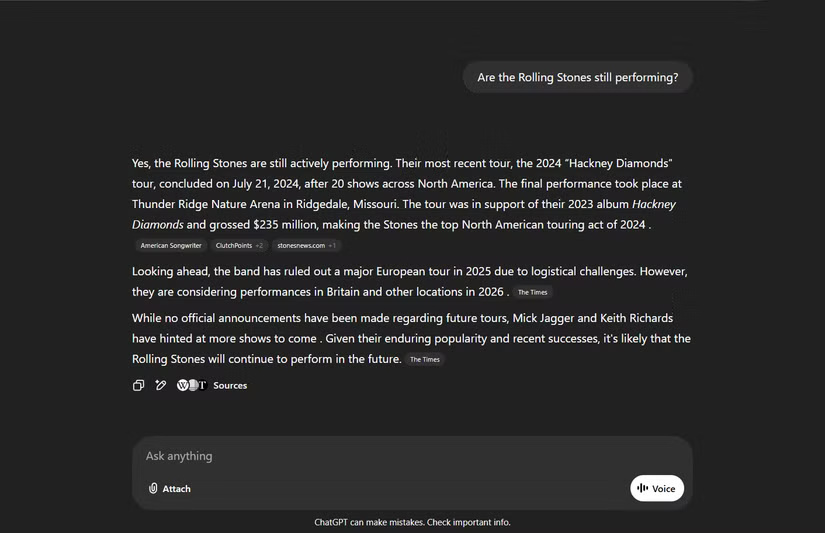
With Google AI Mode coming directly to Google Search, you'll have easy access to the latest news and current events. From financial markets to celebrity whereabouts, the feature is capable of pulling current information from actively updated sources and turning it into an easy-to-read summary.
Google aggregates reports from major news agencies, official bodies, and industry publications, with a clear focus on recentness and where the data came from. That makes it especially useful for time-sensitive areas like economics, security, and new laws.
ChatGPT can also provide recent news when 'Search the web' is enabled, but the experience isn't always immediate or clear. Source links don't always appear in the same place, and while summaries are well-written, ChatGPT sometimes mixes up information or gives completely incorrect responses.
Problem solving and troubleshooting
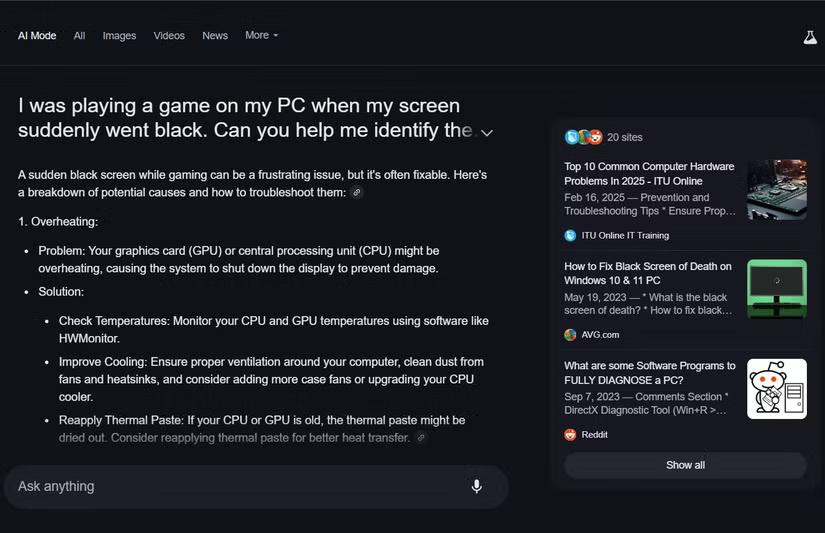
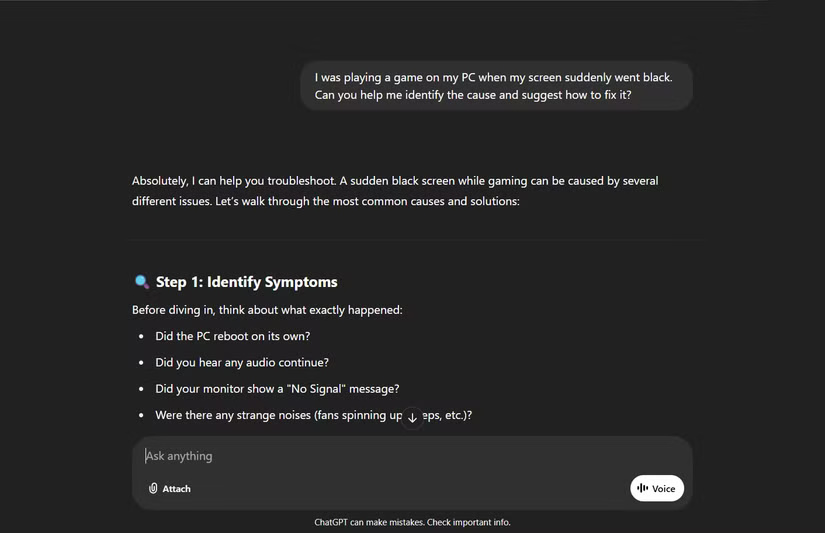
Google AI Mode tends to work better when troubleshooting technical issues across both hardware and software. It provides detailed checklists with step-by-step solutions that match the complexity of the problem.
Take printer setup issues, for example. Google cross-references known error codes with system documentation and suggests different ways to fix them, whether it's a permissions issue or a driver conflict. It often includes links to specific support pages or community forums with more specialized fixes.
ChatGPT can also help with technical issues, but its answers are often limited to a few general possibilities. It handles common issues well, but is less likely to dig into uncommon causes unless you ask it directly. That can make it less reliable when you're dealing with a very unique or specific problem.
What does ChatGPT do best?
ChatGPT's strengths are most evident when it comes to interpretation, comparison, or creativity. While it may not be able to generate sensational headlines with the precision of Google AI Mode, it makes up for it with clarity, structural consistency, and the ability to create deeper context across multiple open prompts.
Definition of words and phrases
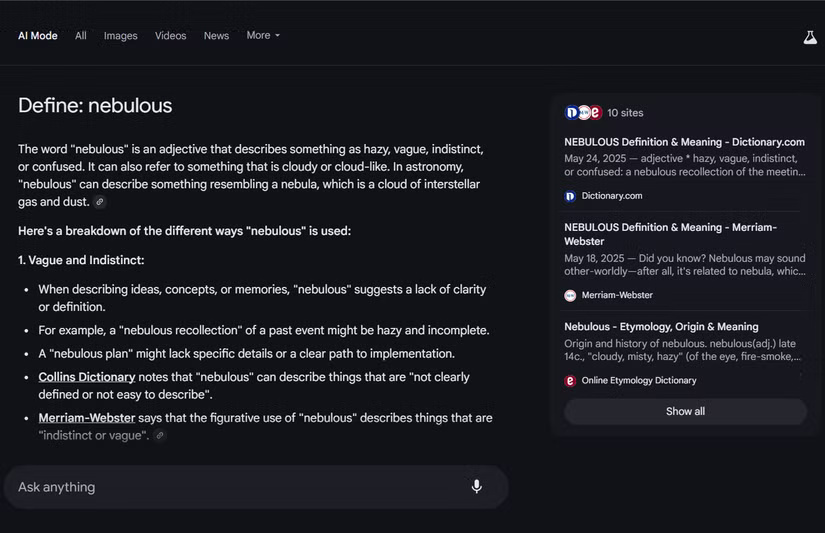
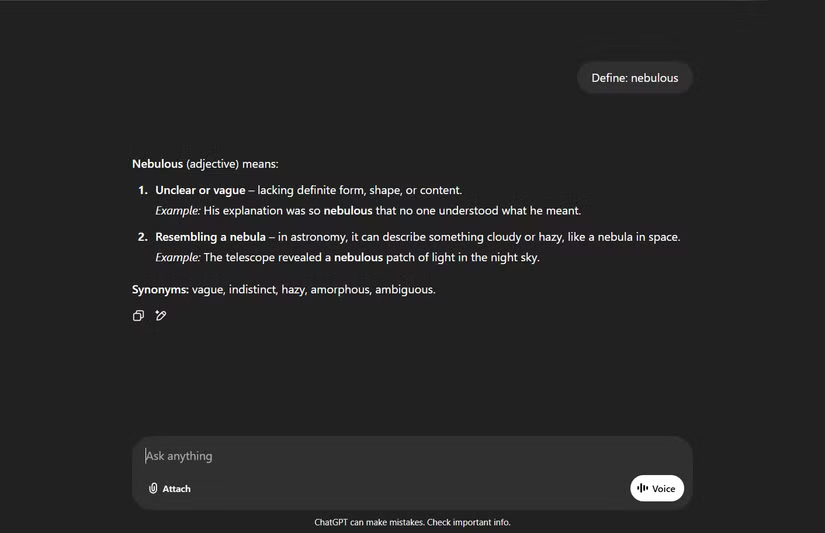
ChatGPT does a great job of providing clear, concise, readable, and quick definitions. Its explanations are straightforward without being too straightforward, and often include subtle differences in tone, usage, or origin. This is especially helpful when approaching a topic from a social or cultural perspective, or when dealing with nuanced fields like law, medicine, or academia, where word choice really matters.
On the other hand, Google AI Mode can sometimes make simple terms more complicated than they need to be. It pulls snippets from multiple sources, which can complicate answers with additional variations or related ideas that don't always make sense. The results are often more comprehensive, but not immediately helpful when you're just looking for a clear definition.
Compare products
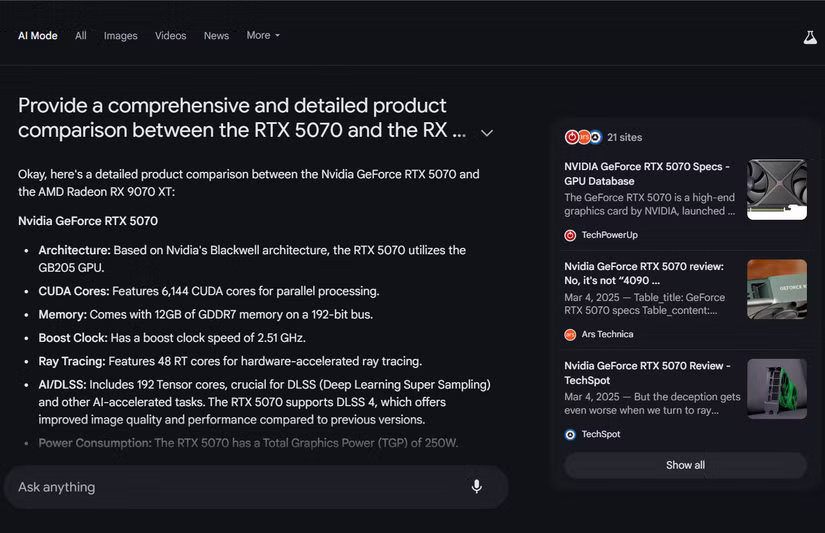
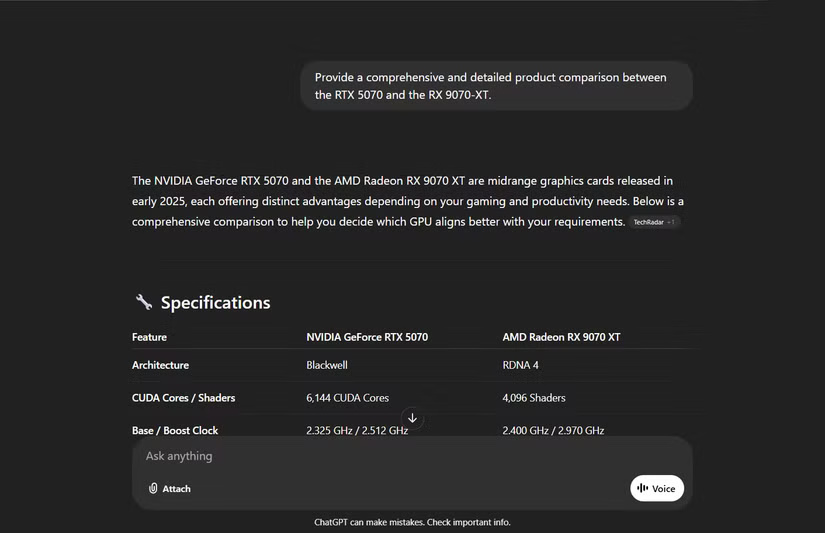
ChatGPT tends to make comparisons clearer by maintaining a consistent structure across key areas like specs, pricing, performance, and user experience.
Whether you're looking at software tools, wearables, or PC components, ChatGPT presents information in a way that makes it easy to compare at a glance. It also incorporates aspects like performance benchmarks, design tradeoffs, and real-world use cases. It's able to highlight what matters most rather than just spit out raw numbers, which is helpful when sorting through similar options in crowded spaces like cloud platforms or smartphones.
ChatGPT's effectiveness in product comparison is enhanced by its ability to maintain context in long conversations. This feature is crucial for detailed comparisons, as seen in the best AI chatbots for handling large conversations.
Google provides a lot of detailed information, but often treats each product individually. The comparisons can be a bit cumbersome, often limited to a short summary table or summary sentence. While the information is there, it can be harder to make clear decisions when the products aren't side by side.
Prompt to create or open
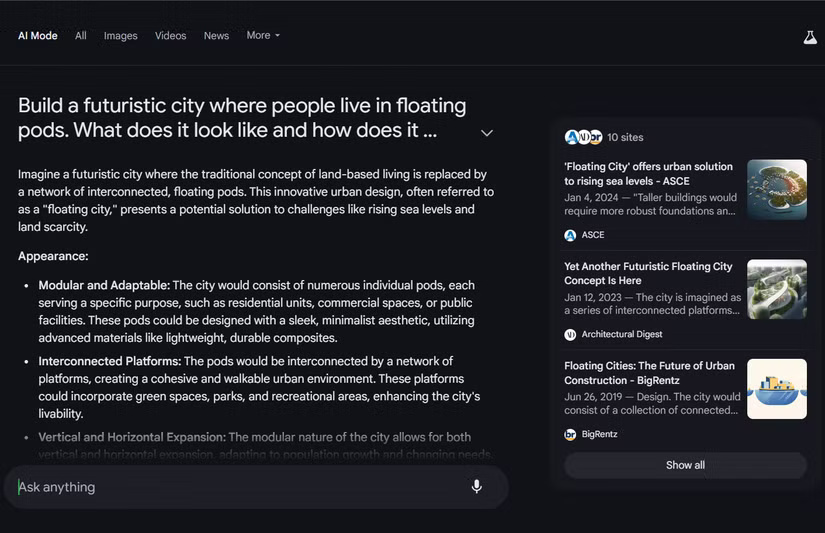
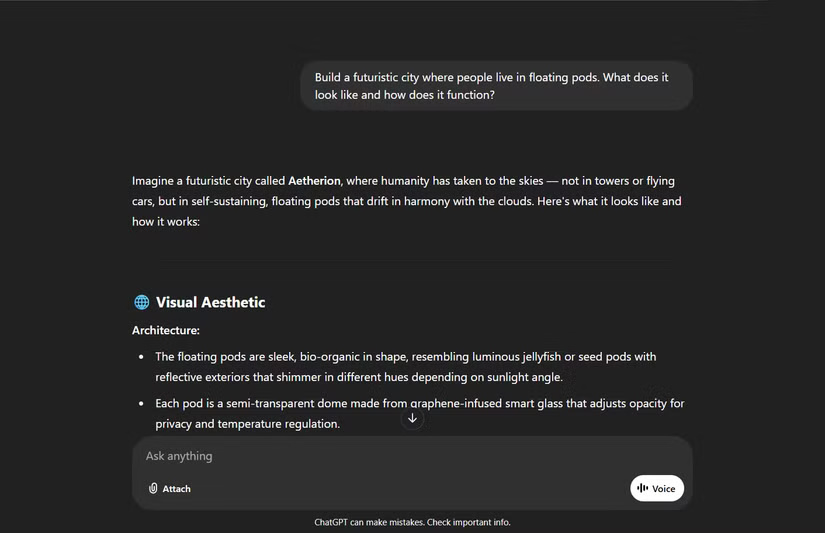
When it comes to creative tasks, ChatGPT tends to give more fluid and comprehensive responses. Its output often follows a natural flow, with unique phrasing and tone that changes based on the style you're going for.
Google AI Mode doesn't do well in this space. It often follows fixed formats and relies heavily on generic templates, ignoring the details you might be looking for in the answers. While Google is generally creative, it lacks the sophistication and variety to make content feel more personal or customized.
The fields are inconclusive.
In some areas, both tools deliver equally strong results. These tend to be tasks that rely less on up-to-the-minute data or specific formatting, and more on structure, tone, and overall clarity.
Abstract or philosophical questions
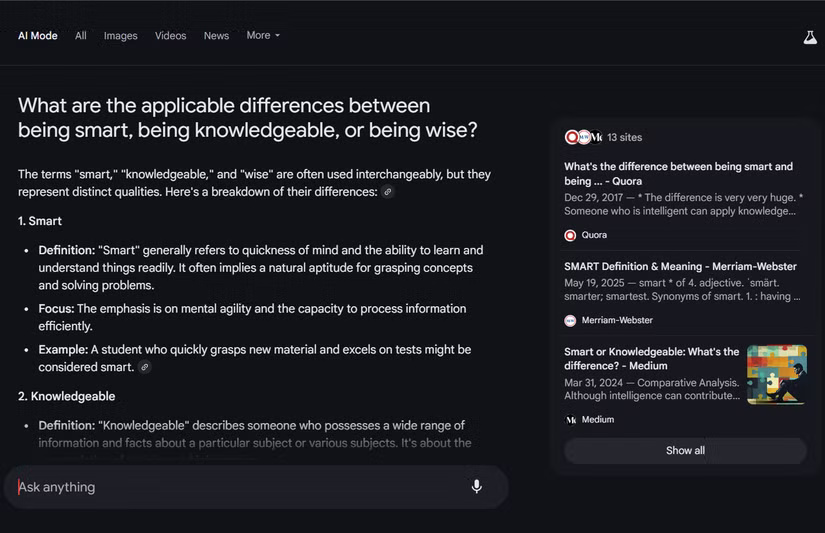
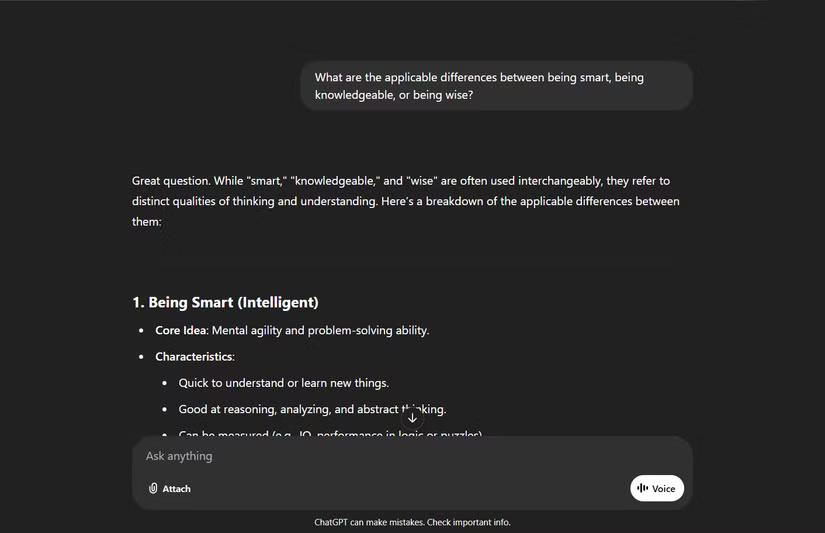
For questions involving subjective interpretation, theory, or human values, both platforms provide thoughtful and balanced answers.
Google and ChatGPT both combine social context, key thinkers, and diverse perspectives with a neutral tone that encourages open exploration rather than pushing you in one direction. Both excel at explaining topics in depth, providing well-informed, well-grounded responses.
ChatGPT tends to sound a little more conversational, while Google tends to be more academic. Neither has an advantage here, as both provide a similar level of understanding and fairness.
Personal advice and prompts are subjective
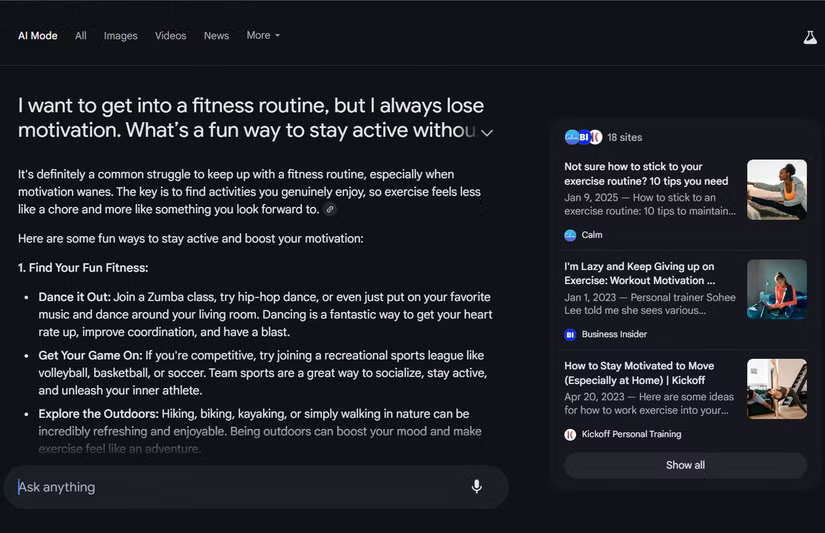
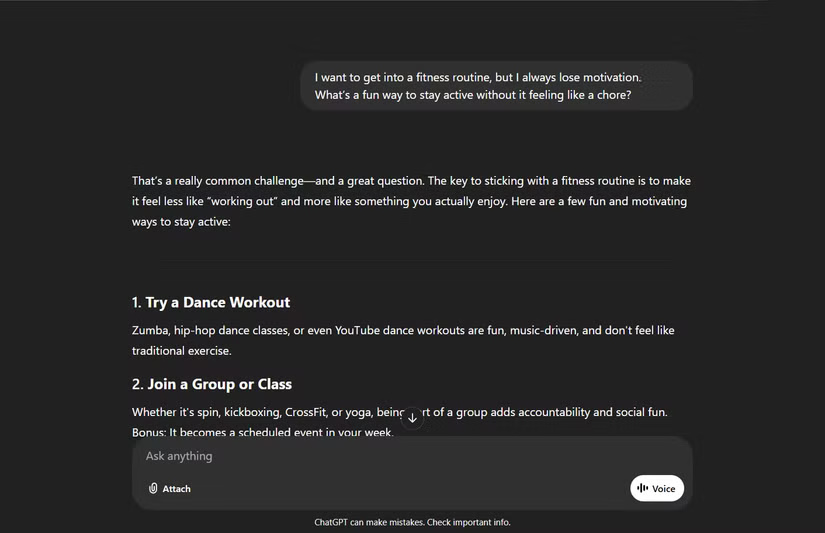
Whether the question is about changing careers, setting goals, or dealing with interpersonal challenges, both Google AI Mode and ChatGPT tackle these subjective topics with care and depth.
Each platform offers a variety of points to consider, avoiding being too pushy and sharing practical tips without jumping to conclusions. Their tone and format are consistent, suggesting they may have been trained on similar data for this particular context. In tests that covered topics like balancing work goals with family life or managing difficult conversations, the responses were remarkably similar, not just in what they suggested, but also in how they delivered the advice.
When it comes to personalized advice and subjective prompts, both Google and ChatGPT provide insightful responses that consider multiple perspectives, making them valuable AI tools for students or anyone looking for guidance.
Instructions for implementation
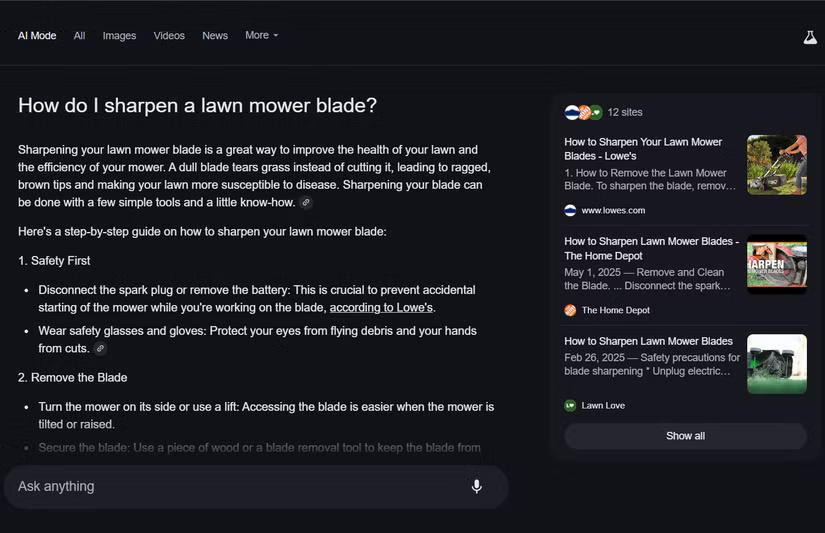
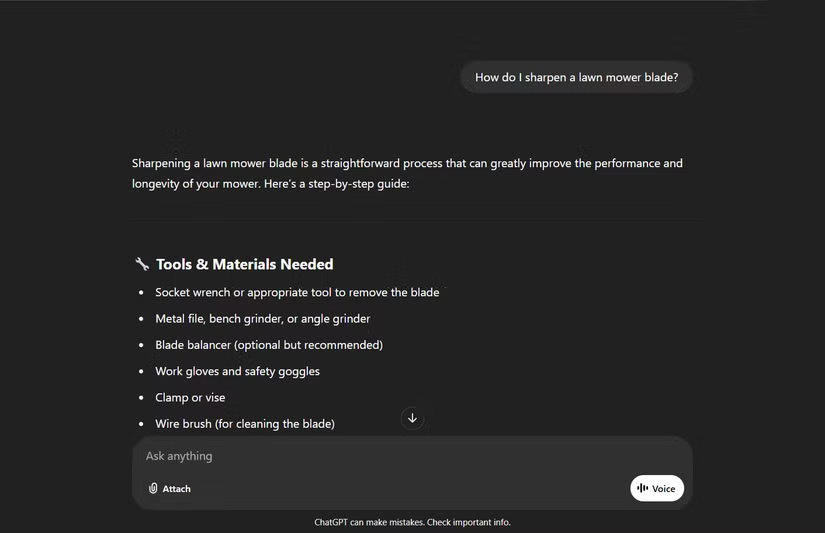
Both platforms handle feedback clearly and efficiently. When it comes to breaking down the process, each platform provides well-organized, easy-to-follow steps.
ChatGPT often starts with a quick list of required materials or prep notes, which is especially helpful for beginners or more complex tasks. Google tends to provide more detailed explanations for each step, adding context or reasoning along the way.
Overall, they are equivalent in terms of structure, readability, and practical application. The minor differences really come down to personal preference rather than ability.
Google AI Mode and ChatGPT reflect different interpretations of what it means for an AI chatbot to respond appropriately. Google prioritizes speed, accuracy, and verifiability—answers that are sharp, well-sourced, and ready to use. ChatGPT, on the other hand, favors reasoning, structure, and nuance—answers that open up, explain, and sometimes even question premises.
Neither model plays to the strengths of the other, but they do not lead to the same outcome. One model provides certainty while the other invites perspective.
Ultimately, the smartest approach isn't about picking the winning option; it's about knowing which tool is right for the job.
You should read it
- Search Race: Is ChatGPT Threatening Google's Throne?
- Tips to set ChatGPT as default search on iPhone
- What makes ChatGPT's search feature superior to Perplexity?
- 10 Essential Chrome Extensions to Use ChatGPT
- OpenAI is developing an integrated search engine ChatGPT, threatening Google
- Instructions for creating ChatGPT Search shortcuts on iPhone
 6 tips for using AI Mode in Google Search
6 tips for using AI Mode in Google Search Harry Potter TV series officially announces main cast
Harry Potter TV series officially announces main cast How ChatGPT helps build a cheap, powerful PC
How ChatGPT helps build a cheap, powerful PC How to adjust Windows 11 notification sound
How to adjust Windows 11 notification sound How to enable the built-in ad blocker in Microsoft Edge on Android
How to enable the built-in ad blocker in Microsoft Edge on Android How to Setup and Run Qwen 3 Locally with Ollama
How to Setup and Run Qwen 3 Locally with Ollama